By Steve T. John
When Wellesley academic, Peggy McIntosh, published her provocative personal essay on white privilege nearly three decades ago, it came at a time when the academy was gaining significant traction exposing academic biases across a broad spectrum of intersecting prejudices. Since the publication of White Privilege: Unpacking the Invisible Knapsack, our public discourse on racial oppression, its corollary, and racial privilege, have entered the mainstream, regularly expounded and dissected on campuses, in legislative chambers, and in corporate board rooms, with the imprimatur of moral authority and with broad support from those who retain the reins of religious, political, and economic power.
While powerful in the clarity of its purpose, namely to acknowledge and shed light on her own position of privilege as a white academic in a specific time and place, McIntosh’s essay is essentially personal. It is a reflection on her own awakening to the realities of privilege hierarchies. It is set against the backdrop of her experiences working in an institution where she and her female colleagues of color operated under different rules of social and professional engagement. In the essay, she tells her story and challenges those reading it not to extrapolate. Rather, she recommends honest self-reflection from anyone committed to understanding how racial privilege benefits them and how to recognize it after lifelong conditioning to not see it.
Unlike McIntosh, my aim is to call attention to a privilege that I, as a gay man, do not enjoy. In attempting to shine a light on the flip-side of anti-LGBT+ bias, namely heterosexual privilege, I acknowledge the risks inherent in generalizing the points of view of a majority whose perspectives I do not share. To the extent I am able to justify my assertion that I understand the drivers of bias against LGBT+ people, I am inherently incapable of describing the intellectual struggle that straight people experience in identifying and acknowledging their own privilege.
Unlike pernicious racial bias, which may or may not be conscious, heterosexism, and the extreme of homophobia, is unvarnished, overt, and socially tolerated, if not wholly endorsed, except in the most progressive communities. Yes, LGBT+ people have made legal strides in the last decade in their fight for equality. Brave public officials throughout the country, as well as the leaders of a number of major corporations, have picked up the banner, boldly pressing local, state, and federal legislatures to turn away from state-sponsored bias. Public sentiment has evolved toward greater social acceptance of LGBT+ people and their relationships. But our concept of “normal” remains decidedly heteronormative.
I understand the operation of straight bias in my life and the privilege it presumes, as a matrix of religious, social, and academic conditioning. Steeped in religiosity, heteronormative conditioning began early in the home in the form of proscriptions in gender-specific clothing, toys, and mannerisms. Heterosexual men in my family and community modeled “right” behaviors that were in turn reinforced by their female partners. In my public-school experience, the hiding of non-conforming sexual orientations in history education reinforced the rightness of ignoring or suppressing the identification of LGBT+ people and their contributions to religious, political, and civil life. While not explicit, the modeled behaviors were intended to ensure the development of normal children in a society that frowns on non-conforming gender behavior, regardless of a child’s ultimate sexual orientation. For me, heteronormative behavior was reinforced over and over again in classrooms and on playgrounds and that has been true throughout the early academic lives of virtually all children.
Like most gay men who knew at an early age that they were different, I struggled as a young man to suppress behaviors and mannerisms I imagined betrayed my otherness, fearful of disapprobation, familial rejection, or homophobic epithets and threats of violence at school. Children learn to identify and revile otherness in their classmates, leading to playground bullying that eventually works its way into the office, the courtroom, and our legislatures. My straight friends who exhibited classically male personalities and interests appearedless anxious even when they were the targets of bullying. My experience of awakening to the gay man I was becoming was different from those of my straight-identifying friends and classmates in profound ways.
Shortly after returning from a two-year Mormon mission and re-matriculating at Brigham Young University (BYU), I revealed my sexual orientation during an ecclesiastical interview. My first honest acknowledgment of my sexual orientation was met with swift condemnation. I was given an impossible ultimatum: I could accept expulsion from the university and a full course-load of failing grades, or I could submit to psychotherapy for the remainder of the term with the expectation that I would quietly depart from the university at the end of the semester. I chose the latter in fear that expulsion would bring deep embarrassment to my family and close circle of friends. As terrifying an experience as it was, I knew that it could have been much worse. Had I confessed to my same-sex attraction just a decade earlier, the on-campus psychotherapy prescription may have includedexperimental electroshock aversion therapy, a practice that, while short-lived, cast a long shadow over the lives of LGBT+students on BYU’s campus. It is a practice that has since been repudiated by the American Psychological Association as ineffective and potentially dangerous.
The LDS church has not changed its position on LGBT+ relationships in spite of recent public attempts to ameliorate the frustrations of a membership that is increasingly accepting of LGBT+ people and their relationships. The church famously helped to bankroll California’s narrowly won Prop 8, which denied LGBT+ people the right to marry. This was my church, my people, and they were once again trumpeting their rejection of a core component of my identity.
The psychological injuries LGBT+ youth sustain when treated unfairly because of sexual orientation are acute and qualitatively different from the experiences of straight youth. LGBT+ people who suffer harassment, bullying, and physical violence are more likely to be seriously traumatized by homophobic attacks than their heterosexual counterparts are by other forms of harassment. The stresses of non-conformity, and the distress of being the target of homophobic attack, lead to an alarmingly disproportionate risk of suicide and suicide ideation among LGBT+ youth than in the general population.
Professionally, LGBT+ attorneys remain vulnerable to usually subtle, occasionally overt, homophobia in the workplace. Those of us practicing a learned profession often delude ourselves into believing our straight colleagues have transcended the dogma of ancient bias, intellectually unfettered to the mythologies held to dearly by the less educated. It is a fantasy, of course, laid bare in the odious comments and writings of jurists and practicing lawyers alike. There are, to be sure, innumerable allies among the ranks of lawyers of all stripes, but openly hostile LGBT+ bias, couched in the First Amendment and underpinned by religious dogma, remains an uncomfortable reality in legal practice, as in all professions.
So, what of heteronormativity and straight privilege? My straight-identifying, cisgendered friends, family, and colleagues appear to move through their adult lives without having to consider how others perceive them in the context of their mannerisms and intimate relationships. Most are keenly aware of the persistence of homophobia as a general matter and consider themselves allies, even advocates, of the LGBT+ community. But they are unlikely to understand the pervasiveness of heterosexist bias among their friends and associates, and in themselves.
There are, however, well-known, explicit biases against LGBT+ people that have been codified and institutionalized by religious organizations around the world. Religious bigotry directed at LGBT+ people spreads beyond the pulpit, seeping into every crevice of civil life, coloring legislative and judicial judgment. It rationalizes odious discrimination in housing, employment, and healthcare. In the wake of Obergefell v. Hodges, several states have, or are attempting to codify a religious freedom exemption for any employer or service provider who does not want to employ or do business with LGBT+ people. While the fight over public accommodation across a range of services is now in the hands of the federal courts, early signals suggest wide-spread sympathy remains for religious intolerance. For example, the Trump administration, in a reversal of Obama administration policy, has directed the Department of Health and Human Services to promulgate rules protecting health care providers who object to providing services to women and LGBT+ people where those services would conflict with the service provider’s religious beliefs—e.g., contraception, abortion, sterilization, and gender reassignment surgery.
It is impossible to create an exhaustive list of the myriad ways in which straight people stand at a distinct, unearned advantage over LGBT+ people, or the struggles and injustices LGBT+ people experience in their personal and work lives. I attempt here to catalogue the issues I believe to be most closely associated with the imbalance in power and advantage between straight people and their LGBT+ colleagues, friends, and family members. Because the legal and social landscape continues to shift daily for LGBT+ people, I consider the following list to be likewise fluid. It is hardly exhaustive. But these are my observations, based in personal experience and in the experiences of the LGBT+ people I’ve known:
1. I cannot assume that the people I encounter at work, in social settings, or in public accommodations will interact with me politely, or at all, if they know that I am gay, even if I look and speak like them.
2. There are no guarantees that I will be able to land a job with, or rent or buy a home from, someone who is hostile to LGBT+ people. Unlike legal protections in employment and housing for women and racial minorities, LGBT+ people remain vulnerable to employment and housing discrimination in most U.S. states.
3. When my husband and I travel together, we can rest assured that, upon checking-in to our hotel, we will be asked, usually with a look of confusion, if we really want only one room with only one bed.
4. Emboldened strangers on the street regularly ask me and my husband if we are brothers or twins. Their eyes widen and their faces flush when we tell them we are a married couple. The confrontation is often disconcerting and leaves each of us to wonder how badly the questioners’ reactions might have been. Anti-gay, homophobic violence remains a real threat to men like us. We do not hold hands in public in most places we travel to, knowing that doing so would draw unwanted attention and the real risk of violence.
5. My husband and I wear wedding bands and professional contacts routinely ask personal questions about my “wife” and whether I have children. Each query brings a moment of reflection and fear of an uncomfortable reaction. It also presents a choice to either awkwardly change the subject, correct the misunderstanding, or retreat into a closet of dishonest personal representation.
6. In spite of the open public discourse on LGBT+ equality and the breadth of LGBT+ activism across the country, the presumption of gay rarity compels the occasional question of “do you know so-and-so” who also happens to be gay. The response, “I do not,” is usually met with a nod and a tacit acknowledgment that the question is absurd on its face.
7. Straight friends and family routinely ask us to psychoanalyze people we do not know, hoping we can shed light on behaviors or life circumstances suggestive of same-sex attraction. I am neither interested in, nor qualified to address, queries concerning human behavior that is not my own.
8. While generally welcome in our respective family homes, we do not express our affection for one another in front of family and friends, for fear of offending their sensibilities. We will not be caught kissing in the privacy of their homes for fear of uncomfortable glances, or awkward silences. We know that our relationship is tolerated, not celebrated.
9. Unlike our heterosexual counterparts who have access to private employer-provided spousal benefits, LGBT+ families living in twenty-nine states enjoy no protections against employer discrimination and therefore have no guarantee of access to those employment benefits.
10. In spite of Obergefell, we are not guaranteed access to government sponsored child fostering programs in forty-two U.S. states that remain silent on the matter. Seven U.S. states expressly grant a religious exception to state-sponsored private adoption and foster service providers who object to providing services to LGBT+ families and children.
11. I have been conditioned to avert my gaze when crossing paths with male strangers. We live with the presumption of same-sex sexualization and many straight men have been taught to assume that gay men sexualize all men. It is an irrational presumption grounded in the historical reality of male sexual aggression as an act of violence. It is the bias that forms the foundation of the so-called gay panic defense in criminal cases of violence against gay men and transsexuals.It rationalizes violent acts against LGBT+ people suggesting that the perpetrators’ fear of being the target of gay affection could reasonably lead to violence as an act of “self-defense” or as the catalyst of a state of temporary insanity.Incredulously, this remains a viable defense in criminal prosecutions of serious crimes, including homicide, in all but two U.S. states – California and Illinois.
12. I do not enjoy the same options available to straight men to worship within many religious communities because of my sexual orientation and my relationship status, regardless of the convictions of my faith.
13. I live in a city renowned for its progressive ethos of LGBT+ inclusion and I am unlikely to experience hospital visitation confusion in moments of medical crisis. But once outside the progressive bubble of San Francisco, my husband and I must take extra steps to prove the legitimacy of our relationship and our request for access to one another should either of us be hospitalized.
14. There are few credible, positive gay leading characters in film, but I do not see myself in representations of our cultural heroes. I do not find people like me in the Disney stories of my youth, for example. While we have made strides in general representations in media, where “gay” is implied, as it was in the most recent live action iteration of the Beauty and the Beast story, it is attached to malevolence and servility or it is clownish and stereotypically camp.
15. Businesses that strive to create inclusive environments remain vulnerable to open hostility and media-supported attacks when their efforts at inclusion are visible in marketing campaigns. Starbucks, for example, came under attack for normalizing same-sex relationships like mine by including illustrated images of presumably same-sex couples holding hands on their holiday coffee cups.
16. I cannot move freely around the world because a number of international destinations are dangerous for LGBT+ people. I would not risk traveling to parts of the Caribbean, Africa, the Middle East, or Russia, for example, because non-conforming sexual orientations are criminalized and come with the threat of prosecution and punishment that includes, in the most extreme jurisdictions, the death penalty.
17. For many heterosexual people, including some who consider themselves allies of the LGBT+ community, any consideration of what it means to be LGBT+ focuses on the sex act, rather than the bonds of love that hold LGBT+ couples together, or the families they work hard to create.Being gay means so much more than physical intimacy.
18. I live with the reality that any illness or significant weight loss will trigger concerns from family and straight friends that the cause of the malady or physical change is HIV infection. HIV/AIDS remains a persistent stigma and many still believe it to be a gay disease in spite of the scientific and demographic realities of the disease. Never mind that men and women of color are disproportionately affected by AIDS in the United States. Nevertheless, I can rest assured as a gay man that any conversation with a healthcare provider about any ailment will begin with a litany of questions about my sexual activity.
In This Together
I enjoy the community of a diverse group of friends of all genders and sexual orientations—a luxury afforded me by the time and place in which I live. For LGBT+ people living outside the ultra-progressive enclaves of large, American urban areas, the reality of isolation persists. Their lives are less visible to the homogeneous, heterosexual majority, whatever the racial or religious composition of the community. The Internet may offer the hopeful promise of identity acceptance, offering LGBT+people who feel alone in the world access to images and stories of people just like them.
Straight allies sitting on the sidelines of the LGBT+ struggle for equal rights acknowledge the injustice of prejudice, but what role do these allies play in the quest for full LGBT+ inclusion in religious and civil life? Straight privilege is power, wielded from the courthouse, the legislature, the pulpit, the news room, and the board room. Just as the civil rights movement for racial equality leans on white support, the gay rights moment has, and always will, depend on the moral courage of heterosexual men of all colors. While straight women have been less reluctant to voice support for gay rights, they too remain divided in their acceptance of non-conforming sexual orientation and the place of LGBT+ advocacy in the fight for racial and gender equality.
I recognize that we all operate in a matrix of intersecting advantages and disadvantages based on race, gender, religion, and sexual orientation. My point of view as a gay man observing heterosexual privilege necessarily fails to peel back the seemingly endless layers of power and privilege affecting us all. To exhaust the possibilities of privilege would sit squarely outside the scope of this piece, but I acknowledge the limitations inherent in any exercise that attempts to illuminate our understanding of any singular privilege.
Conclusion
Finally, while I have shared my perspective on straight privilege and the effects of heteronormative bias in my life and in the lives of LGBT+ people I know, I am reminded daily that the world is changing around us. From the It Gets Better Project to The Trevor Project, LGBT+ youth are receiving hopeful messages of affirmation I could not have imagined as a young gay man growing up in a small town in Idaho nearly a half-century ago. My husband and I did not imagine the day would come when we would be legally entitled to exchange marriage vows, yet here we are. It was unfathomable just a short time ago that we would see mainstream religious sects ordain LGBT+ ministers, but they are installed and ministering to increasingly diverse congregations. We could also never have imagined that a community would elect a transgendered woman to a seat in a state legislature. These have been the presumptive positions of power reserved for cisgendered straight men and, more recently, women. This is progress.
We have come a long way towards LGBT+ equality in a very short period of time, and we have a long way to go. Our efforts are vulnerable to homophobic backlash and the bigoted retrenchment of the progress we are making. I encourage all who consider themselves to be our straight allies to acknowledge the power you wield in our personal and professional lives and to hold sacred your responsibility to exercise that power ethically and with humility. It is a power unearned; a mere product of circumstance, whether you see it or not. The uncomfortable truth is that we will make no progress in our fight for justice and equality without your willingness to cede power and let go of the presumption of heteronormative entitlement.
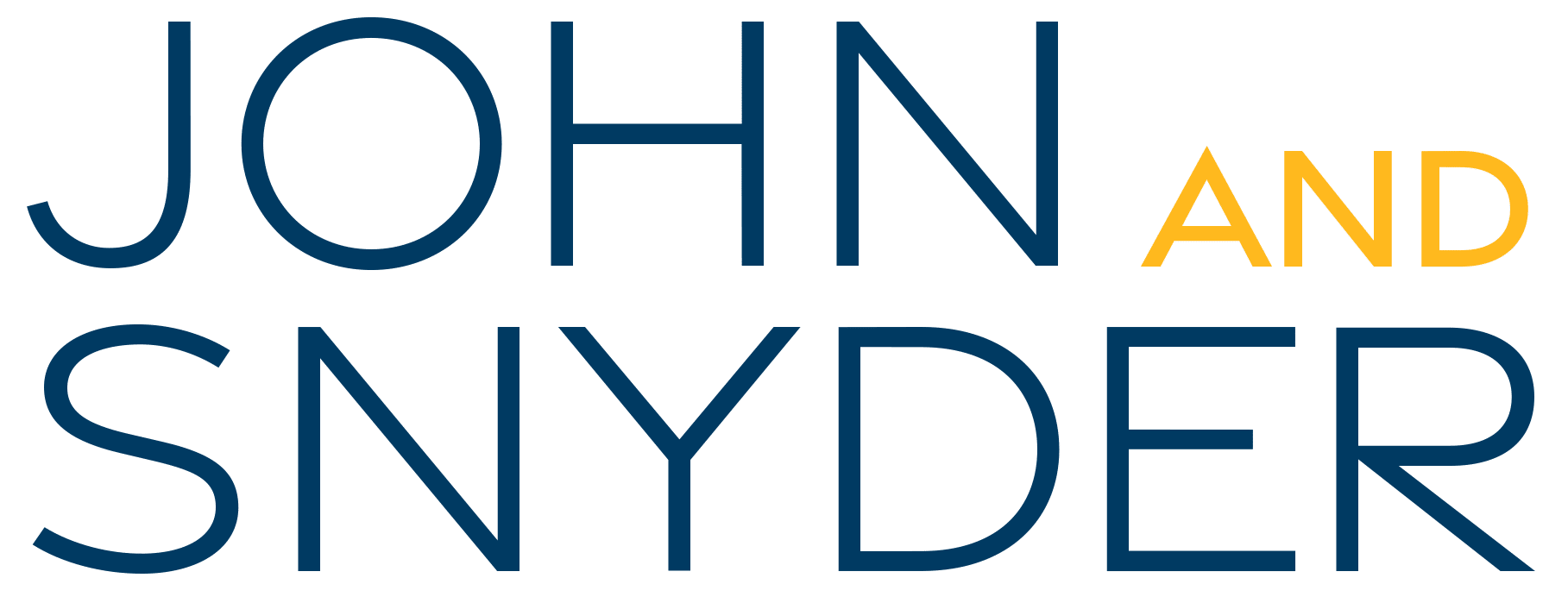


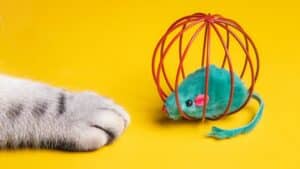
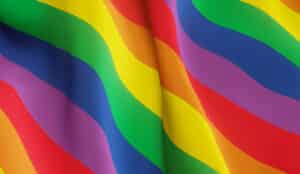
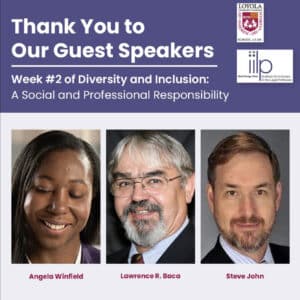
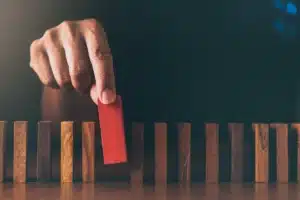
So well said. What a powerful piece.